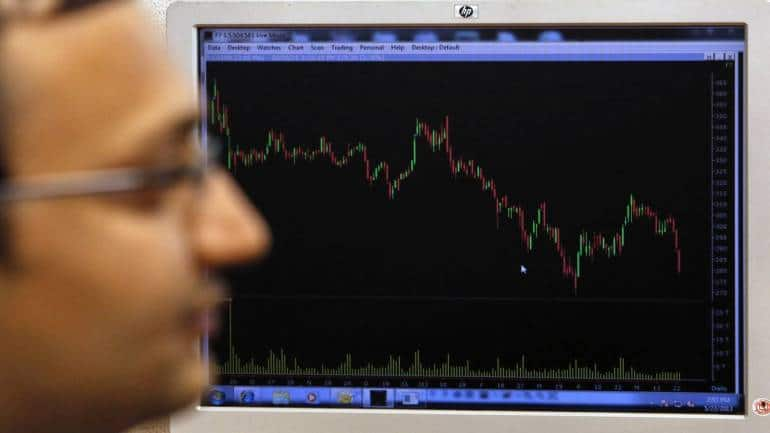Options trading principles: Trading Guide for starter, refresher for pro by Shubham Agarwal
Options being scientific instruments, they are easier to be rule-bound. If these rules are followed religiously, the probability of coming out profitable over a period of time becomes very high.
SHUBHAM AGARWAL | 19-Dec-20
Reading Time: 3 minutes

In this last rally post the COVID-19 led fall, we see a lot of fresh participants taking keen interest into this wonderful world of options trading. While we were inching higher and higher, many more must have gotten intrigued to the segment as well.
It always helps to go through the basic principles of trading any instrument. This helps in starting on a right note avoiding any accidents or if we have been trading for a while, this could help realigning ourselves once again.
Option being scientific instruments, they are easier to be rule bound. If these rules are followed religiously, the probability of coming out profitable over a period of time becomes very high.
Let us simply go through Buy and Sell of these Calls and Puts. The general principles trading them will be established by answering a few simple questions viz. What it means to trade each one of them? What are they expected to be traded for? (The view) and finally, are there any caveats in trading each one of them?
Two instruments, Call & Put and two possible trades Buy & Sell. Let us see each one of them and answer the aforementioned questions.
Buying Call: By definition buying a Call option would give you a choice of either to or not to Buy a particular stock at a strike price on an expiry day. But we are not going to hold it till expiry day, but we are going to trade them.
More importantly, we need to know two relationships. Call Premium goes up and down with price. Also, call premium reduces with each passing day.
Buy a Call for trading when the view is Bullish for the immediate term.
Caveats: The premium will turn to zero if the underlying moves against you so Keep a Stop Loss in underlying Price. Also, the premium will turn to zero if the underlying does not move. So, keep a time stop loss of 2-3 trading sessions.
In case of profits, one would not need any instructions. Buying Put:By definition buying a Put option would give you a choice of either to or not to Sell a particular stock at a strike price on an expiry day.
Even here, we need to know two relationships. Put Premium goes up with fall in price and vice-versa. Also, Put premium also reduces with each passing day.
Buy a Put for trading when the view is Bearish for the immediate term.
Caveats remain same as Buying a Call, have a stop loss in Underlying and Time. If either one of them is triggered, exit out of the option buy position.
In case of profits, one would not need any instructions.
Selling an Option
Selling either Call or a Put would entail an obligation.
Sell a Call: Obligation to Sell
Sell a Put: Obligation to Buy
This in isolation is a highly risky trade. As the maximum profit is the premium received by Selling option, while maximum loss could be multifold. Why is this trade so risky? Because it has a greater success rate with two out of three possibilities in favor. If the underlying moves in favorable direction or if it does not move the Sell option position would make money.
Be it starters or be it pro traders, I would like to propose a trading mechanism different from stop loss, which we discussed on the Buy side. Considering the risk profile of the trade, one would take Sell Option trade in conjunction with existing position.
Match the Obligation to Sell/Buy with an Intent to Sell/Buy.
Example: I hold an underlying stock or future, bought at 100. I intend to sell it at 110.
I will Sell 110 Call and get the Obligation to Sell it at 110. Benefit is that if that I am getting rewarded for taking an obligation for doing something, which I would have done anyways. So, if underlying expires above 110, my selling price would be 110 + Premium. If 110 is not reached till expiry, I would still be pocketing that premium.
Similar trade can be done for Buying back an underlying already sold at lower price by Selling a Put or creating a fresh Buy at lower level by Selling a Put.
These are some of the basic guidelines for option trading . After over a decade, I still remind myself these guidelines because history has it, undisciplined option trader is prone to fatal accidents.
Disclaimer: The views and investment tips expressed by investment experts on Moneycontrol.com are their own and not that of the website or its management. Moneycontrol.com advises users to check with certified experts before taking any investment decisions.
Learn and read more about option seller from Quantsapp classroom which has been curated for understanding of option Spreads from scratch, to enable option traders grasp the concepts practically and apply them in a data-driven trading approach.
Recent Articles

Knowing when not to adjust trades: Shubham Agarwal
27-Dec-25

How to make profit when markets go sideways: Shubham Agarwal
20-Dec-25

Beyond Panic: Take control when your derivatives trade turns red, says Shubham Agarwal!
13-Dec-25

Evolve Your Trade: The missing step in most trading systems: Shubham Agarwal
06-Dec-25

Best trending option trading strategies: Shubham Agarwal
29-Nov-25

3 best ways to hedge using Options: Shubham Agarwal!
22-Nov-25

When in doubt to write, do Iron Fly: Shubham Agarwal!
15-Nov-25

Identify potential turning points with advance-decline: Shubham Agarwal
08-Nov-25

SHUBHAM AGARWAL is a CEO & Head of Research at Quantsapp Pvt. Ltd. He has been into many major kinds of market research and has been a programmer himself in Tens of programming languages. Earlier to the current position, Shubham has served for Motilal Oswal as Head of Quantitative, Technical & Derivatives Research and as a Technical Analyst at JM Financial.
Recent Articles

Knowing when not to adjust trades: Shubham Agarwal
27-Dec-25 10:58:00

How to make profit when markets go sideways: Shubham Agarwal
20-Dec-25 12:14:00

Beyond Panic: Take control when your derivatives trade turns red, says Shubham Agarwal!
13-Dec-25 09:12:00

Evolve Your Trade: The missing step in most trading systems: Shubham Agarwal
06-Dec-25 20:43:00

Best trending option trading strategies: Shubham Agarwal
29-Nov-25 09:32:00

3 best ways to hedge using Options: Shubham Agarwal!
22-Nov-25 09:11:00

When in doubt to write, do Iron Fly: Shubham Agarwal!
15-Nov-25 10:48:00











